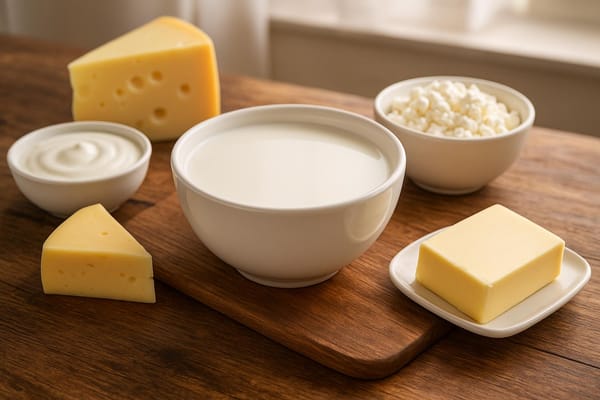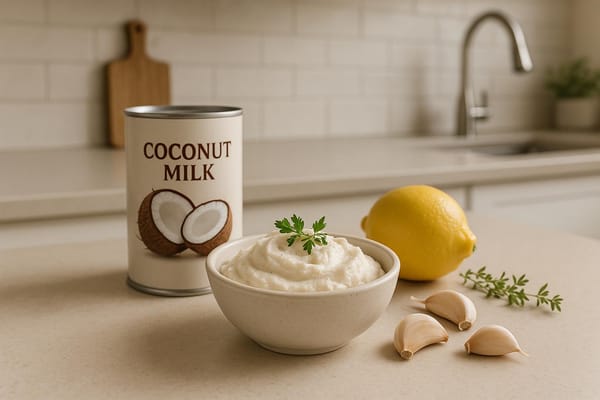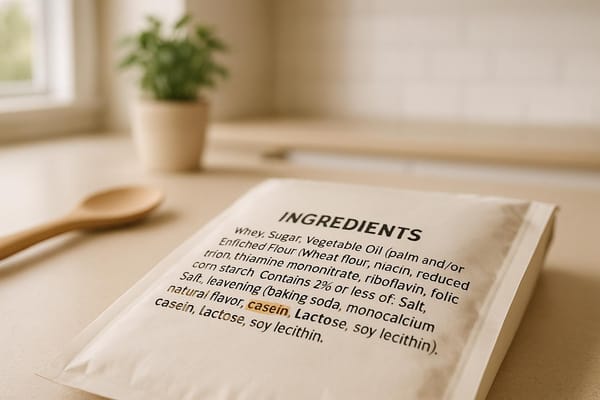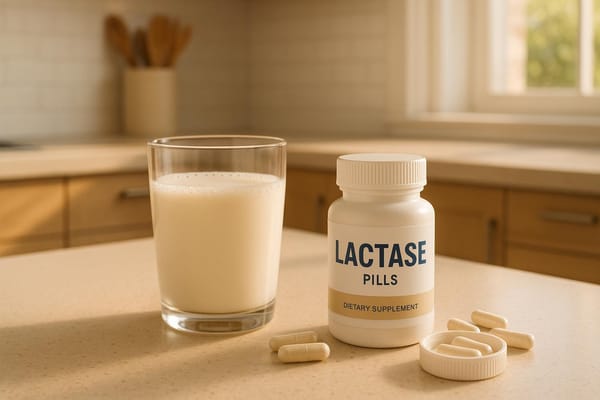Why Lactose-Free Cream Curdles and How to Fix It
Learn why lactose-free cream curdles and discover effective prevention and recovery tips to maintain smooth, creamy textures in your dishes.

Lactose-free cream curdles because of heat, acid, or sudden temperature changes. Here's how to prevent and fix it:
-
Prevention Tips:
- Use cream with at least 36% fat for better stability.
- Keep cooking temperatures below 175°F.
- Gradually warm the cream to avoid temperature shocks.
- Add acidic ingredients (like lemon or wine) after the cream or neutralize them with a small amount of baking soda.
- Stabilize the cream with cornstarch or flour.
-
Fixing Curdled Cream:
- Remove from heat immediately.
- Cool quickly using an ice bath or ice cubes.
- Whisk in a cornstarch and warm milk mixture to restore smoothness.
Lactose-free cream behaves differently due to its enzymatic treatment, but with these tips, you can achieve creamy, consistent results in your dishes.
Easy fix for separation or curdling in creamy and cheesy dishes
What Makes Lactose-Free Cream Curdle
Lactose-free cream curdles when the casein proteins in it break down under certain conditions. Understanding how these proteins behave helps explain what causes this reaction.
How Proteins Play a Role in Curdling
Even though lactose is removed by lactase, the casein proteins in the cream remain intact. These proteins usually maintain a smooth structure, but external factors can disrupt them, causing them to clump together and create a grainy texture.
Common Causes of Curdling
Several factors can lead to curdling in lactose-free cream:
- Heat exposure: High temperatures or sudden temperature changes can destabilize casein proteins.
- Acidic ingredients: Ingredients like lemon juice, wine, or tomatoes lower the cream's pH, which affects its stability.
- Temperature shock: Mixing cold cream with hot liquids can cause thermal stress, leading to curdling.
These factors can amplify each other. For instance, using both high heat and acidic ingredients makes curdling much more likely.
Enzymes like protease can help reduce curdling by breaking down casein proteins. Products like milktab, which contains 22,000 FCC units of protease, are sometimes used to minimize issues when consuming dairy products.
5 Ways to Prevent Curdling Before It Happens
Avoiding curdling starts with choosing the right ingredients and using proper techniques.
Use Cream with Higher Fat Content
Creams with more fat are less likely to curdle. In the U.S., heavy cream typically has at least 36% milk fat. Compare that to half-and-half (10.5–18%) or light cream (18–30%), and you'll see why heavy cream is the better choice.
Control the Temperature
Keep the cream below 175°F to avoid curdling. Use a thermometer and aim for a gentle simmer. If you see small bubbles forming, reduce the heat immediately.
Mix in Thickeners
To stabilize the cream, whisk 1 tablespoon of flour, 2 teaspoons of cornstarch, or 1 tablespoon of arrowroot powder with a bit of cold cream to make a smooth paste. Stir this mixture into your dish for added stability.
Warm the Cream Gradually
Let the cream sit at room temperature for 20–30 minutes. Then, temper it by slowly adding small amounts of the hot liquid to the cream until it’s warmed. This step helps prevent sudden temperature shocks.
Handle Acidic Ingredients Carefully
Acidic ingredients can cause curdling. Add cream after cooking acidic components or let the dish cool slightly first. You can also neutralize acids by stirring in ⅛ teaspoon of baking soda per cup of cream. For recipes with wine, reduce the wine before adding cream for better results.
3 Steps to Fix Curdled Cream
If your lactose-free cream starts to curdle, don’t panic - quick action can save it.
Take It Off the Heat
As soon as you notice curdling, remove the pot from the heat and place it on a cool surface. This stops the cooking process immediately.
Cool It Down Quickly
You need to lower the temperature fast. Here’s how:
- Set the pot in a larger container filled with ice water, making sure the water reaches halfway up the pot. Stir gently to help it cool evenly.
- For smaller amounts (up to 2 cups), add 2–3 ice cubes directly into the cream. Stir briefly and remove the cubes once it cools. Keep in mind this might slightly dilute the mixture.
Once the cream has cooled, you can focus on fixing its texture.
Restore the Smooth Texture
Whisk together 1 tablespoon of cornstarch and ¼ cup of warm lactose-free milk until smooth. Slowly add this mixture to the curdled cream while whisking continuously. This should bring the cream back to its original silky consistency.
Extra Help for Lactose-Free Cooking
Try milktab for Easier Dairy Digestion

Having a backup plan is always smart when cooking. milktab's triple-enzyme formula - featuring 27,000 FCC lactase, 22,000 FCC protease, and 1,000 FCC lipase - helps with dairy digestion and can minimize the risk of curdling during cooking. If you'd rather take matters into your own hands, you can make lactose-free cream at home.
Make Your Own Lactose-Free Cream
Avoid curdling issues with this simple homemade method:
-
Start with Heavy Cream
Choose heavy cream with at least 36% fat for better stability during cooking. -
Add Lactase Enzyme
Use liquid lactase drops designed for dairy. Add 4–5 drops per cup of cream, adjusting as needed based on the enzyme's strength. -
Let It Work
Store the cream in an airtight container in the fridge for 24 hours, allowing the enzyme to break down the lactose completely. -
Test Before Cooking
Heat a small amount gently to check stability before using it in your recipes. If it holds up, you're good to go!
Quick Summary
Here's a quick guide to handling lactose-free cream effectively, focusing on prevention and fixing issues:
Prevention Tips:
- Use cream with a minimum of 36% fat content for better stability.
- Keep the temperature under 175°F to avoid curdling.
- Add stabilizers like 1 teaspoon of cornstarch per cup to maintain consistency.
- Heat the cream slowly and evenly.
- Add acidic ingredients only after everything else is mixed.
- Temper the cream before combining it with hot liquids to prevent separation.
Fixing Curdling:
- Take the cream off the heat immediately.
- Cool it down quickly using an ice bath.
- Whisk vigorously until the texture becomes smooth again.
Extra Tips:
- Store homemade lactose-free cream at 40°F (4°C) to keep it fresh.
- Test a small batch before using it in a larger recipe.
- Consider enzyme supplements if you need extra help digesting dairy.



